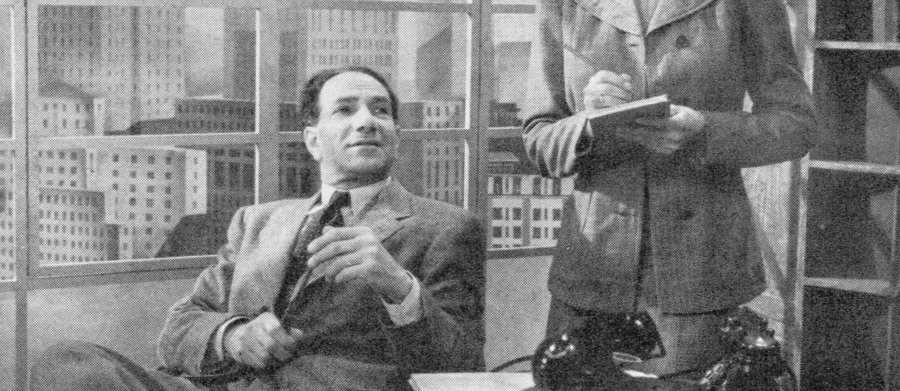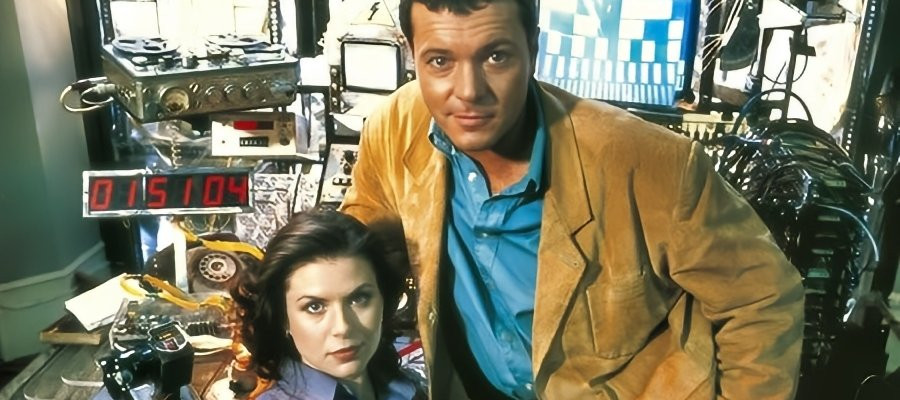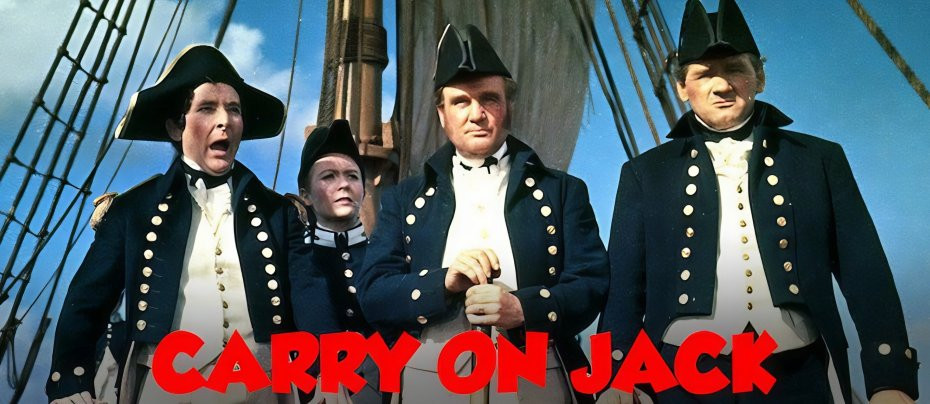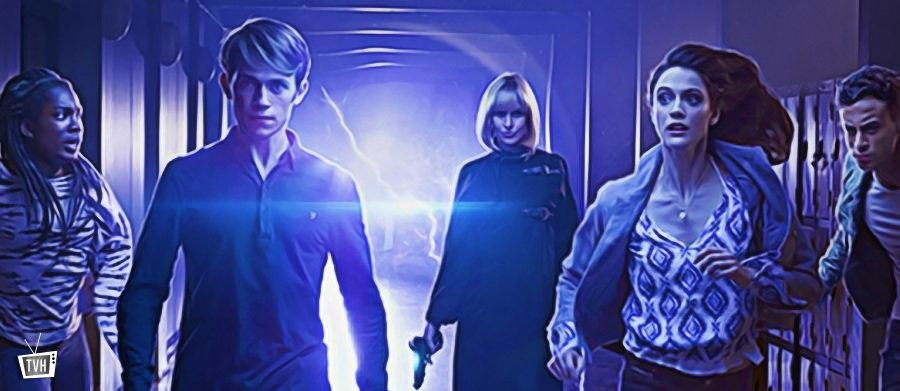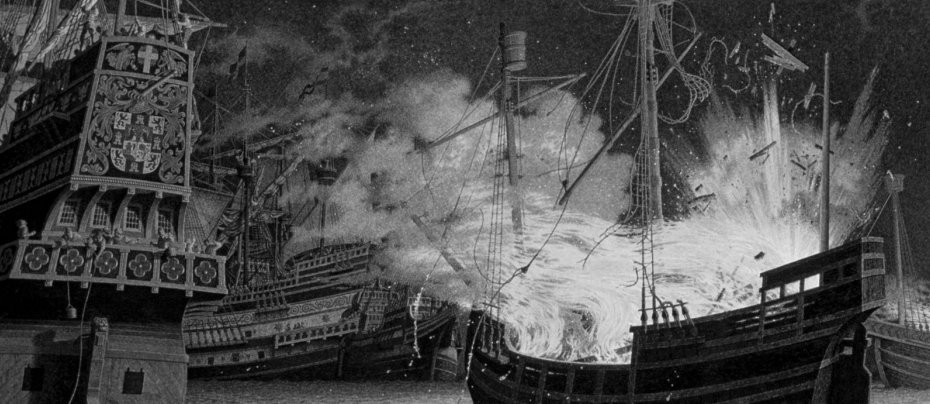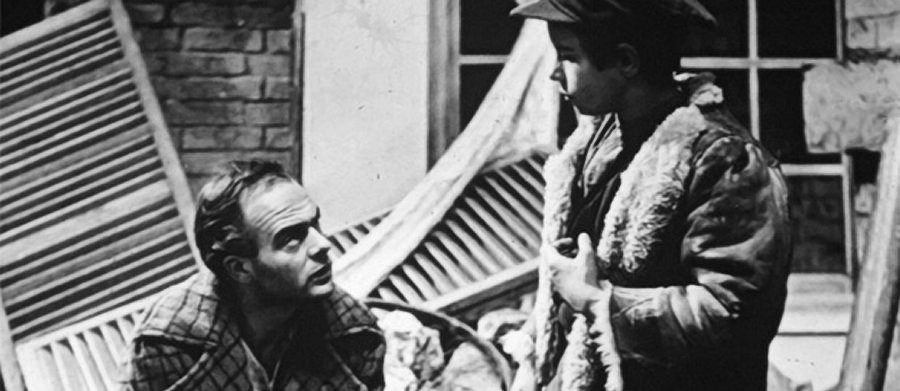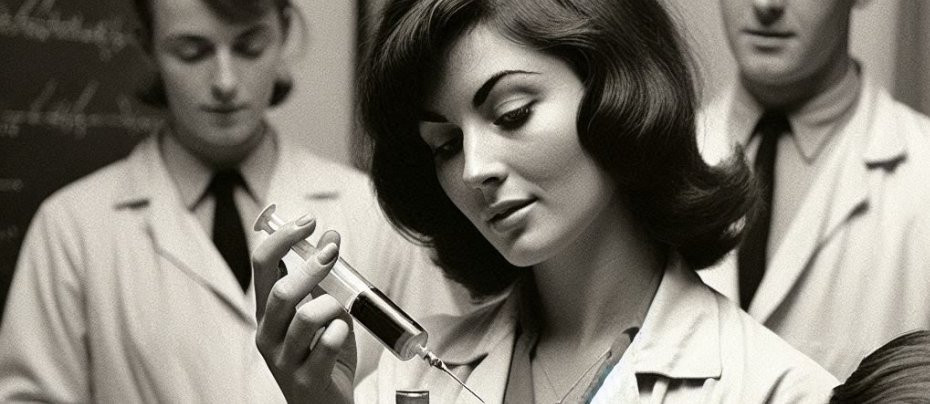
The Escape of R.D.7
1961 - United KingdomArticle: Laurence Marcus
Doctor Anna is a medical researcher who believes that she is on the point of successfully developing a myxomatosis-like disease which will be decisive in the battle to control plague-bearing rats. Success will bring world-wide recognition. But when her almost fanatical devotion to her project brings her into collision with orthodox authority and when there is a threat to put an end to her experiments, she rebels and continues on her own.
She is heedless of the difficulties and dangers of handling unstable germ-like organisms and viruses with neither the facilities nor the safety measures of official research.
The five-part series, The Escape of R.D.7, which debuted on BBC television Tuesday 20 November 1961, was written by Thomas Clarke, who had previously written two plays for BBC-tv. 'Originally, Dr. Hastings was to have been a man,' he told Radio Times magazine. 'But when I visited research labs to check the background, I found that many research workers were women, and that the ones working in this field were mostly young and glamorous.'
Also interviewed in November 1961, the star of the series, Barbara Murray (The Power Game), said, "Actually I [play] the type of scientist who can put her microscope back in the box at 5.30 and after a shower and a change of clothes, can be hitting the high spots with the men who can help me in my job.
"I am not very nice, really." Female scientists, Murray said, are generally portrayed as bespectacled erudite and knowledgeable. Plain Janes who are more interested in bugs than boudoirs. "When I got this job I did a great deal of research. I found that female scientists were human beings like the rest of us. Sometimes more so. I am trying to give the part of the scientist some sex appeal."
James Ormerod, at that time a freelance producer, and who joined the BBC for this series, was himself involved in scientific research towards the end of the war. 'Many scientists,' he said, 'have a private bee in their bonnet - and research people do often have an astonishingly single-minded attitude.'
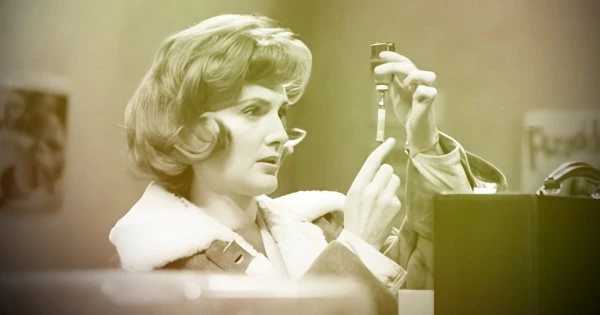
The first episode ends with a young lab assistant, Peter Warner (played by Roger Croucher - The Spread of the Eagle) staggering about the streets, his blood corpuscles irritated by a new virus infection he picked up after being bitten by a lab rat. Later, in her attempts to continue her research, Anna manages to alienate all her friends who abandon her before she falls prey to Patrice Constantine (Patrick Cargill – Father Dear Father), a sinister financier. To win back the trust of colleagues, Anna goes as far as infecting herself but falls ill as a result. Constantine agrees to bankroll further research but Anna discovers that she may not be the only other one infected and is now tortured by the suspicion that she is the cause of a nation-wide epidemic.
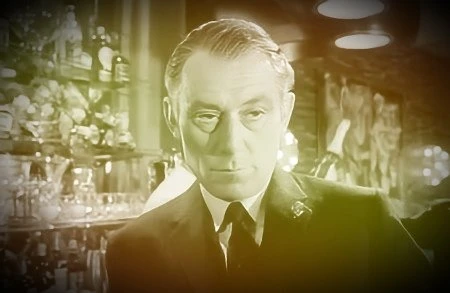
The series also starred Jennifer Wright (Emergency-Ward 10), Ellen Pollock (World's End) and Derek Waring (Z Cars).
Reviewing the first episode in the Newcastle Journal, critic Harry Thompson, wrote, 'The Escape of R.D.7 showed distinct signs, in its last five minutes of blood and thunder compulsion.
'There are danger signals though. Barbara Murray, as the scientist who has inoculated a rat with some strange disease, and finds herself with a stricken man on her hands, is already beginning to create an image of dedication. The danger lies in the lesser characters. Far too many of them are caricatures.' The critic in the Liverpool Echo described the series as 'moderately successful.' The Sunday Post's critic thought the series was flagging by the second episode, bemoaning the fact that 'One minute Warner is dragging himself from the sea, apparently half dead. The next, he's stepping out towards the railway station.' The same critic later reported on the series as it headed towards its fifth and final episode 'The more I see of The Escape of R.D.7 the more I'm convinced it would have made a good half-hour play. The strongest elastic couldn't stand the amount of stretching this serial has had so far.'
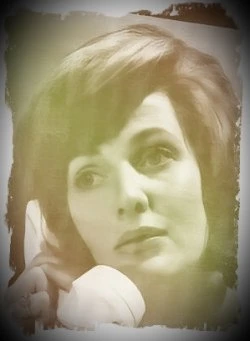
According to the Belfast Telegraph the second episode 'retained the momentum of the first.' However, a mention in the Aberdeen Evening News (20 December 1961) was less than complimentary with the critic stating that the most recent episode 'created in me an urge to develop a vaccine to prevent this type of serial.' Yet another critic complained that the BBC were trying too hard to replicate the success of the Quatermass series’ and along with this series and A for Andromeda had piled failure upon failure.
Despite these criticisms, the series made it to number 17 in the TAM ratings for all regions with an audience of 4,370 homes tuning in (audience rating were given in homes back in the early 60s and not by an estimate of people watching). Despite its low rating it was the top BBC show in the week ending 24 December 1961, beating Doctor Kildare (18th), Come Dancing and Here's Harry (joint 20th). That same week it made joint 9th in the North East with a 44% share of households.
It is unknown if The Escape of R.D.7 is still held in the BBC archives.
Many thanks to Alan Morton for the Radio Times issue covering the series.
Header illustration an artist's impression of a scene from the series
Seen this show? How do you rate it?
Seen this show? How do you rate it?
Published on September 9th, 2024. Written by Laurence Marcus for Television Heaven.



